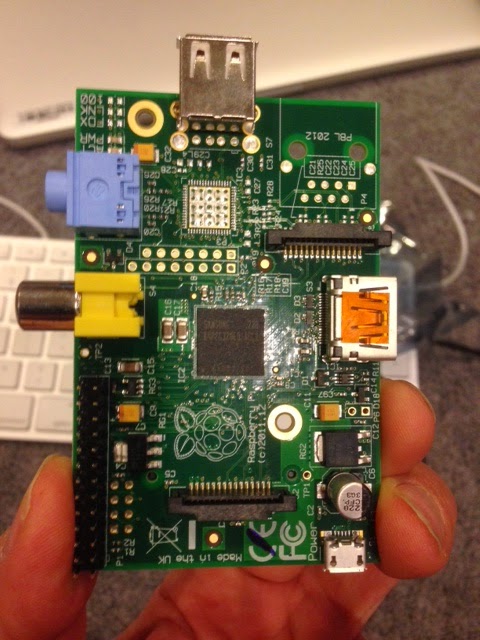It's now been 3 months since I got my first
Raspberry Pi, a model B, which is serving as a weather server (running Weewx) and connected to my Davis Vantage Vue weather station. Anyhow, that is kind of mundane, and I'm ready to move onto new and more exciting projects.
Enter, model A. There are 3 key differences between the model A and B. The model A is essentially a model B, minus the ethernet port, minus the second USB port, and half the RAM (256 MB). So what's the upside? It uses 1/3 the electrical power, making this perfect for off-grid applications.
Project Pi
I'd like to build a platform to use for aerial photography, using the pi. My motivation is to get a bird's eye view of soccer tournaments, a mass bicycle ride start (Pelotonia), and other vistas at an altitude of 150' to 300'. I haven't yet decided on balloons or kites (balloons are good for zero to very little wind, whereas kites are designed for various wind speeds). In any case, I'll need to make a
Picavet cross to keep the camera on a level plane.
I'd like to see if I can create an ad-hoc network using a laptop computer and wireless access point to connect wirelessly to the pi as it is in the air. Maybe I can control it in realtime and control the panning and picture taking. After getting some looking down shots, I'd like to do some panoramas. I'll get to calculate weight lifting ability of helium balloons for one thing. Panning can be controlled by servos or stepper motors.
Project Pi Lapse
For this endeavor, I want to build a platform for long duration, unattended time-lapse photography. We are planning a family trip out to the Durango, CO area this July, and would like to take advantage of the remote location to make some special memories.
This project will involve solar power, power management (scheduled off time via timer), and some script writing. Ultimately, this project could evolve into a much longer-term unattended operation. The power management could allow it to run for a year for a certain number of hours per day.
Project Birdy Pi
Lastly, I want to adapt the pi to function as a video system based on motion in a bird house. I'll re-use the solar panel from the Pi Lapse project and see if it is possible to detect motion.
First Steps
I bought a model A pi and pi camera at Microcenter. Because the model A has no ethernet port, I bought a Wi-Fi usb dongle and powered USB hub.
The powered USB hub makes it possible to use the keyboard, mouse, and Wi-Fi dongle off the single USB port until it can be accessed remotely.
I installed the NOOB (new out of box distro) and updated/upgraded apt-get. I used a 32 GB SDHC card because of the large storage capacity I'll need for Pi Lapse (perhaps 4 GB of pictures per day from the 5 megapixel camera at 20 second intervals).
















